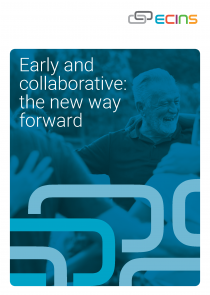Of the 750 serious acquisitive crimes, youth violence and gang offenders managed by Staffordshire’s Integrated Offender Management (IOM) scheme, around 35 per cent are in prison.
This means communication is an essential part of the management of risk, and Staffordshire’s IOM team is now using ECINS to enable closer working with the ten prisons in the Midlands Region.
The IOM team has adapted ECINS’ ‘wheel assessment’ module to help assess the pathway needs of offenders before they are released from prison.
“Offenders are invited to self-assess themselves in a structured discussion with IOM officers and decide on actions to address any needs,” said Staffordshire Police Sergeant Martin Steventon, who is currently seconded to the IOM team based in Stoke-on-Trent.
“These scores and the context is used to create an individual plan for each offender and track their progress. It is hoped that over time we will be able to see progress on an individual basis and for different cohorts of offenders.”
Staffordshire’s IOM team has been using ECINS for more than two years. On a daily basis, all information that comes in from police and partner systems is put on to ECINS and split into red (high risk), amber (medium risk) or green (low risk).
Sgt Steventon said one of the biggest cohorts was those that they managed in prison – “that was a real gap for us”.
“We did communicate with prisons reasonably well before we had ECINS, but not in real-time. We had lots of phone calls, emails and meetings, which was quite difficult, but ECINS has facilitated that communication between our IOM teams in prisons,” he said.
ECINS ‘radar assessment’ tool records any contact between those officers and offenders. This results in a detailed personal profile of an offender, including their general attitude, response to interventions and, importantly, any anxieties – this is particularly important close to an offender’s release when the IOM team can look to address these anxieties. Sharing relevant elements of this profile with prison partners means prison staff have a much better understanding of how the subject might respond to imprisonment, engage in rehabilitative interventions and what risk they pose.
Prison officers can update ECINS with details of the offender’s progress and behaviour. What results from this two-way conversation through ECINS is a seamless approach to managing offenders and the risk they pose in the community and in prison.
“This tool has the advantage of bringing together work on outcomes with work on value for money. It offers another way of demonstrating accountability for resources invested in services to achieve outcomes by making an explicit link between resources committed and outcome improvements gained,” said Sgt Steventon.


